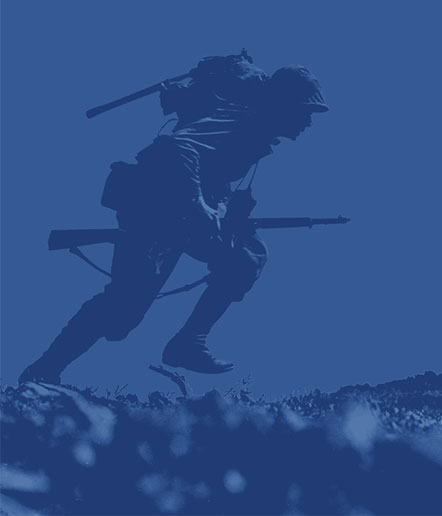In the wake of the surprise attack on Pearl Harbor on December 7, 1941, American President Franklin Roosevelt commanded the U.S. military find a way to hit Japan back in a similar fashion. A “joint Army-Navy bombing project” was formed in order to coordinate such an attack that would aim to target industrial centers on the Japanese home islands. Along with stunting industrial production in Japan, American military planners hoped to incite fear in Japanese citizens, breaking down the country’s high morale after their successful attack on Pearl Harbor. Additionally, the United States believed this move would put them in the good graces of the other Allies, who had been fighting together in Europe since 1939.
American military planners decided the attack would be carried out by B-25 bombers transported by an aircraft carrier to a point in the Pacific, east of Tokyo. After making their bombing runs, the plan was for the planes to either land on the east coast of China or in Vladivostok, a Pacific port city in the Soviet Union. However, Soviet leader Joseph Stalin was reluctant to allow the use of Vladivostok for this purpose, because he did not want to provoke Japan, as the two countries were not officially at war. Therefore the Chinese landing site, which was an area of the country controlled by the pro-Allied Chinese Nationalists, was chosen. Lieutenant Colonel James H. Doolittle, USAAF (United States Army Air Forces) was chosen to lead the attack, and Navy Admiral William F. Halsey, Jr. was in charge of the task force to organize the attack’s logistics.
A total of 24 airplanes were chosen from the 17th Bombardment Group, USAAF, to be a part of the raid. Crew members were chosen from volunteers, who were informed the mission would be extremely dangerous. They began extensive training for the mission in March 1942 at Eglin Field, Florida. The training consisted of cross-country flying, evasive actions, night flying, and low altitude bombing approaches. On April 1, 1942, the planes boarded the Hornet (CV-8) aircraft carrier and began sailing toward Japan. Meanwhile, the Japanese had been listening in on American Navy radio traffic, and were able to surmise that a carrier attack on the islands might be coming after April 14. On April 18, a Japanese ship acting as a lookout for enemy ships spotted the American taskforce and radioed back to the home islands. The task force was within 650 miles of Japan, and despite the original plan dictating that they be 400 miles off the Japanese shore before launching, Halsey initiated the bombers early. Halsey made the decision after taking into account the Japanese land-based air power that had gathered and were ready to attack. The Japanese had expected the Americans to come as close as 200 miles from Japan, and had sent out bombers to locate the task force. The long-range deployment of U.S. bombers surprised the Japanese, even despite the intel they had been able to gather. With this advantage, Doolittle’s raiders successfully hit targets in the Japanese cities of Tokyo, Kobe, Yokohama, Nagoya, and Yokosuka.
Of the 16 B-25’s that were launched, 15 crashed in the region of China that was occupied by Japan. The final bomber landed safely in Vladivostok, but the pilot and crew were interned by the Soviets who received them. After struggling in the harsh conditions of war-time Soviet Russia for 13 months, the crew decided they must escape. After finding a sympathetic Soviet officer, the crew was able to make its way to the British Embassy in Iran, and after a series of additional stops, the United States. The fate of other the crewmen varied, as some were aided by Chinese civilians who helped them escape occupied China. Some of the raiders, however, were taken as prisoners by the Japanese officials and were executed for what the Japanese classified as war crimes. Many were kept prisoner by the Japanese and were harshly treated, constantly on the verge of starvation. Those who were able to return from the raids continued their military service throughout the war. All 80 of the raiders were awarded the Distinguished Flying Cross and received medals from the Chinese government as well, whileDoolittle himself received the Medal of Honor for leading the raid. Although the raid hit its targets, the Japanese preparation beforehand made the actual damage done rather minimal. The raid did, however, greatly improve American morale, which was low as a result of the attack on Pearl Harbor.
Suggested Reading:
Encyclopedia Britannica: Doolittle Raid
Naval History and Heritage Command: Doolittle Raid
James M. Scott, Target Tokyo: Jimmy Doolittle and the Raid That Avenged Pearl Harbor (W.W. Norton & Company, INC., 2015)








